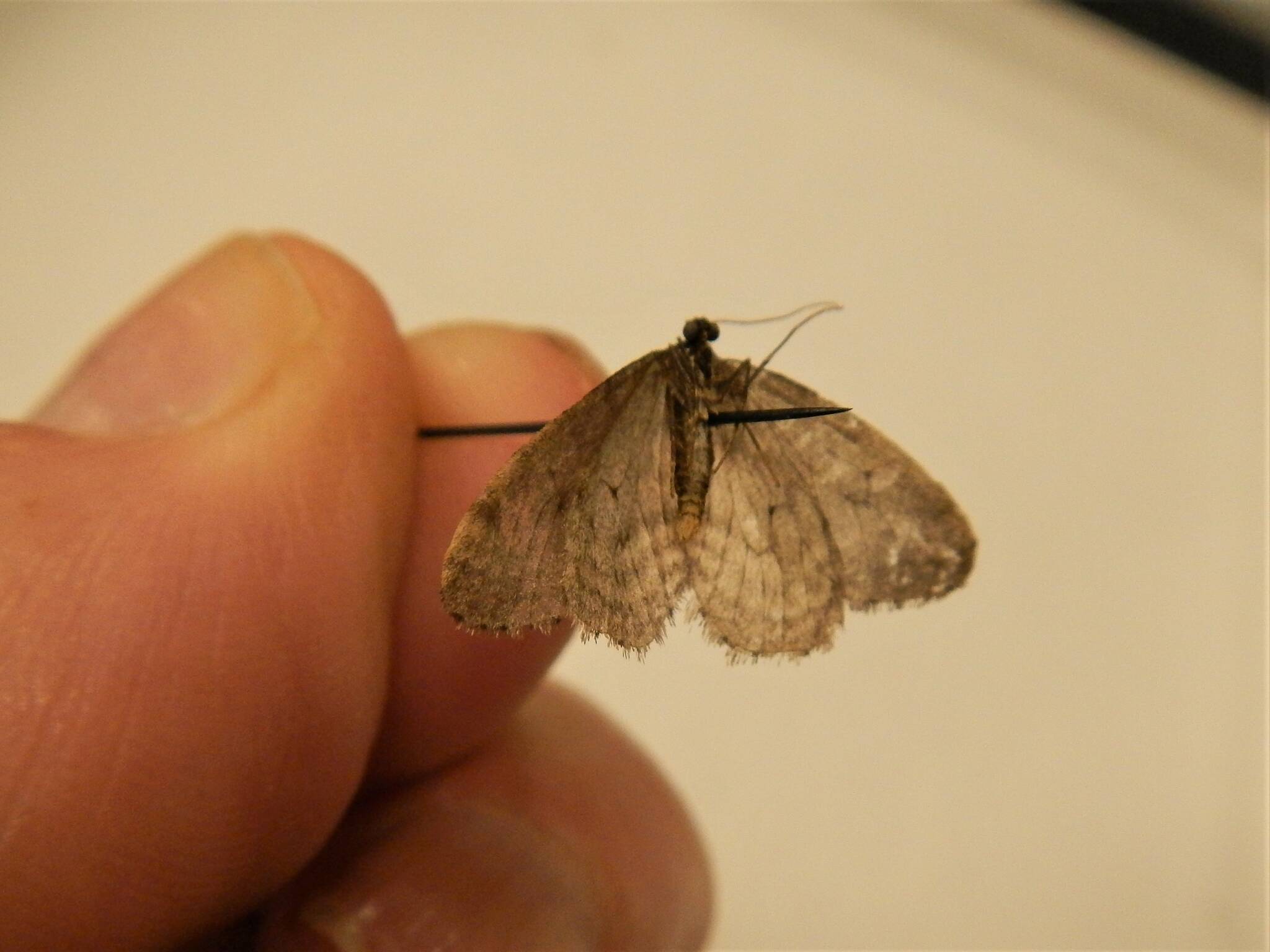Submitted by Russel Barsh.
Most butterflies and moths emerge and fly as adults in the warmest months of the year. Anyone that has left an outdoor bulb shining after dark here in the islands between Thanksgiving and Easter has probably seen at least a few plain, pale, smallish moths drawn to the light. The fact is that our woodlands produce large numbers of moths on relatively calm winter nights, even when it’s drizzling. Who are they, and what role do they play in our island ecosystem? This winter, we are trapping moths to identify them and learn more about what they eat (their larval host plants) and what eats them. The moths we have identified thus far, flying in December, are Geometrids (“loopers” or “inchworms”) of the tribe Boarmini, a large cosmopolitan group of inconspicuous moths with wings that look vaguely like dirty linen.
Most of often, we have been seeing Hesperumia, a moth genus widely distributed around the North Pacific rim from Japan to California, associated with Douglas firs and the kinds of deciduous trees routinely found in our islands’ forests, such as oceanspray and willows. The photo is a specimen collected in the evening on Christmas Day in a wooded area near Lopez village.
Now, here is the mystery: Hesperumia and its nearest relatives are reported to fly mainly in summer, like most other North American moths, but sometimes as early as March. This means that these moths can “cheat” and emerge as adults when the weather is still cool and wet—avoiding many predators than only emerge or arrive in summer.
You should be thinking: “now wait, there is a big difference between March and December!” Generally, that would be true. But one of the peculiarities of our island climate is very mild winters, apart from two or three episodes of freezing weather and a week or two of snow. “Junuary”, a mid-winter false spring, is common. Temperatures tend to remain above freezing for a majority of the islands’ winter nights. Moths here can emerge two or three months earlier than has been reported elsewhere in North America.
We previously discovered that the islands are unusual because bats remain sporadically active throughout the fall and winter, neither hibernating nor migrating. This is only possible because some of our moths are able to emerge, sporadically, through fall and winter. Moths—and the bats that feed on them—need only fly for two or three days per week. Bats can sleep deeply for several days without eating or drinking. And moth caterpillars spend months eating voraciously and storing up fats so that, for just a few days, they can fly and mate as adults. When they emerge, moths are loaded with calorie-rich fats.
Of course, this means that bats are our first line of defense against moths that eat our woodlands and our orchards. Likewise, we need to maintain undisturbed woodlands (and unsprayed orchards) so that island bats can continue to feed and thrive in the islands year-round.
This project was made possible by the San Juan Island Community Foundation and island donors, and the MillsDavis Family Foundation, for Kwiaht’s efforts to make island homes and gardens more bat-friendly. You can help by catching and saving some winter moths for us to identify and add to our moth-DNA library! Set moths aside in a plain paper envelope, write the location and date of collection on the envelope, and mail it to: KWIAHT, PO Box 415, Lopez Island WA 98261.



